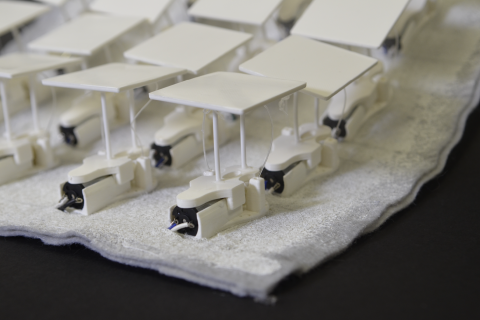ReCompFig
Designing Dynamically Reconfigurable Kinematic Devices Using Compliant Mechanisms and Tensioning Cables
2022

From creating input devices to rendering tangible information, the field of HCI is interested in using kinematic mechanisms to create human-computer interfaces. Yet, due to fabrication and design challenges, it is often difficult to create kinematic devices that are compact and have multiple reconfigurable motional degrees of freedom (DOFs) depending on the interaction scenarios. In this work, we combine compliant mechanisms with tensioning cables to create dynamically reconfigurable kinematic mechanisms. The devices’ kinematics (DOFs) is enabled and determined by the layout of bendable rods. The additional cables function as on-demand motion constraints that can dynamically lock or unlock the mechanism’s DOFs as they are tightened or loosened. We provide algorithms and a design tool prototype to help users design such kinematic devices. We also demonstrate various HCI use cases including a kinematic haptic display, a haptic proxy, and a multimodal input device.
The research team includes Humphrey Yang, Tate Johnson, Ke Zhong, Dinesh K. Patel, Gina Olson, Carmel Majidi, Mohammad Islam and represents several CMU departments, including Material Science, Mechanical Engineering, and the School of Design.
Project Website
ReCompFig Project Details
Researchers
Humphrey Yang, Lining Yao
Research Areas

